| Photojournal
- 3 October
2004
Birding
school
|
On Sunday morning I
got up and headed down to Boundary Bay to see what was happenin'.
It was a fairly nice day and I decided that I would try experimenting
with some of the settings on my camera.
For whatever reason,
most of my experiments from that morning turned out blurry and
unusable. Here's one of the less-blurry ones, showing what the
bay was looking like that day. I like this one because of all
of the different-sized birds.
|
|
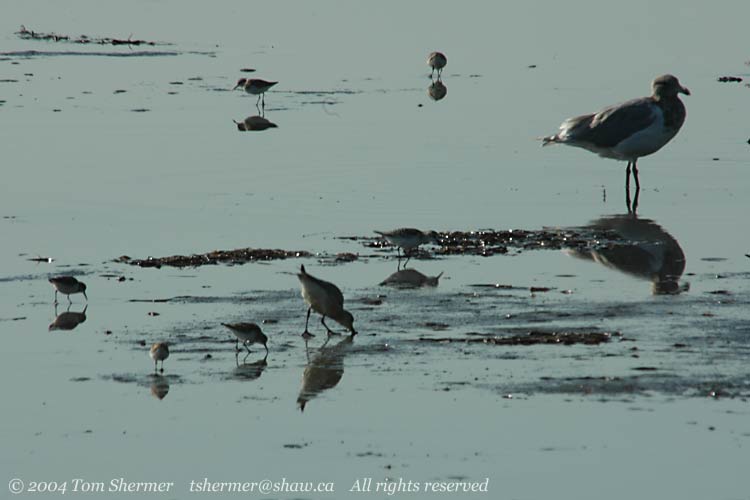 |
|
While I was at the
bay, I encountered a group of birders. I decided to stick around
with them and see what I could learn. I'd been seeing people posting
stuff on the web about all of the birds they found, and I thought
my birding skills could use some improvement. So I watched 'em
and listened and learned some about what real birders do. It was
birder school for your pal Tom.
When I joined them,
they had just started to scan a group of Canada Geese on the upland
side of the dyke. This was a little curious, as Canada Geese are
pretty common up here. But hey, they were checking out the geese,
so I did, too. It was a bunch of Canada Geese.
Except then one of
the birders says, "Cackling Goose". So I looked harder
at the geese, looking for a Cackling (which is essentially a small
version of the Canada). I didn't see anything that looked Cackling
to me, but a couple of other birders confirm Cackling. I tried
taking some photos of the bird that I think they were saying was
Cackling, but even in the photo it looks as big as a Canada. My
first lesson seems to be that I need to learn to judge size better.
And then one exclaims
"Greater White-fronted". I know that there is a species
called Greater White-fonted Goose, but I don't know what it looks
like. Again, I try following the description of this goose's location,
but I don't see anything there but Canadas. Soon, the other birders
are confirming Greater White-fronted, and then they spot another
one. And I just see a flock of Canada. I've now found out that
I'm in need of identification skills.
Some of the birders
decide to head over to the Reifel Migratory Bird Sanctuary, which
is about ten or fifteen minutes' drive away. I decide to go over
there, too, and see what else I can learn.
I arrived at Reifel,
but none of the birders were there. I had seen at least one of
them turn off onto 72nd street, and thought that maybe they had
decided to go somewhere else. Oh, well..at least I had learned
a bit and I ended up at a fairly birdy place.
I looked in the slough
to the east of the parking lot, where normally there are just
a bunch of Mallards. True to form, there were plenty of Mallards
there, but there were also a couple of other birds. One was this
Dowitcher. It's an adult bird in nonbreeding plumage, and I think
it's a Short-billed Dowitcher, not a Long-billed...but I'm not
certain.
|
|
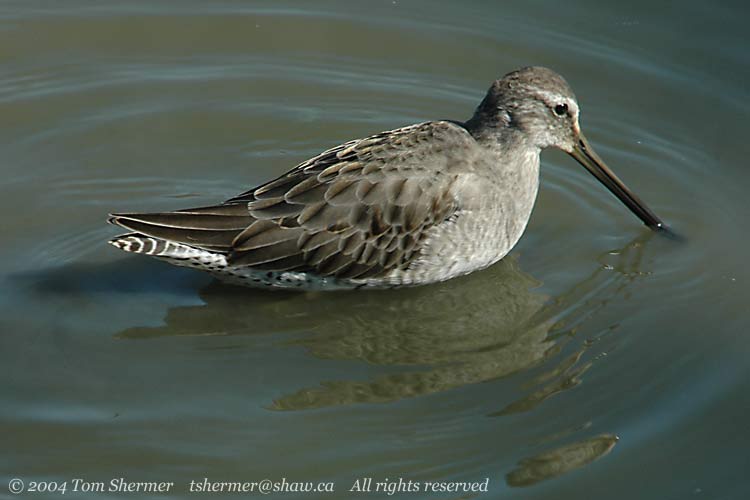 |
| The other
odd fellow in the slough was this Northern Shoveler. He's been sticking
that enormous bill of his in the mud. |
|
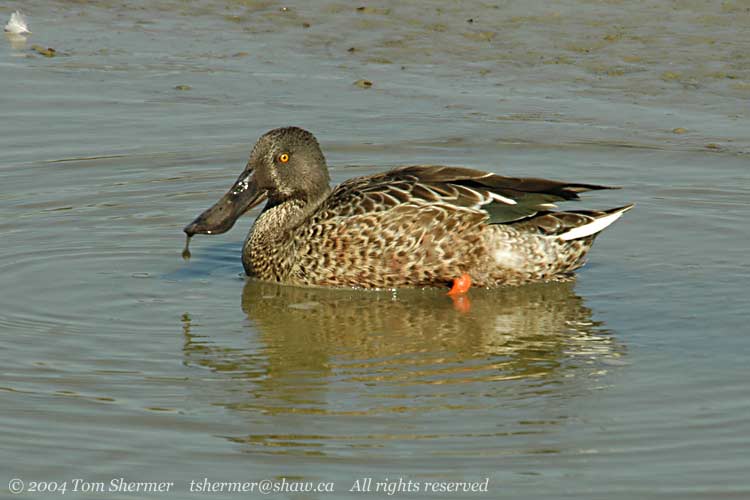 |
|
Then I noticed the
birders arriving. They met up behind their second vehicle and
I walked over and asked if I could tag along with them. They assented,
and introduced themselves as George, Carlo, and Ilya. We went
into the refuge, and checked the log book near the entrance. There
had been some Mountain Chickadees seen there, and they became
our target.
We went right past
Fuller's Slough and the feeders near there, heading west towards
the foreshore. At the first branch in the path, my companions
stopped and were looking into trees where I hadn't noticed anything.
After a few moments, though, I found some motion. Bringing my
binoculars to bear, I found what they were looking at. There were
several Yellow-rumped Warblers in the trees here. Watching for
a few minutes, it began to seem like the trees were teeming with
them. They were everywhere I looked. How could I not have noticed
them at first?
I set down my tripod
and got some photos of these beauties. Here's one of them.
|
|
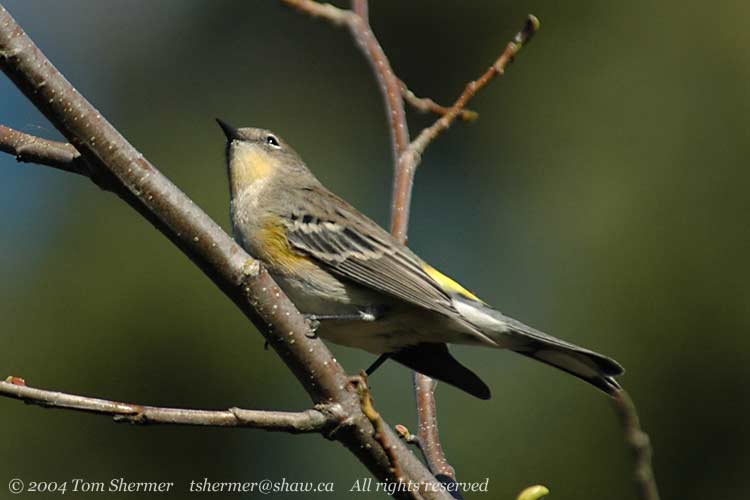 |
| Here's another
one. I never did figure out why they're called yellow-rumped. |
|
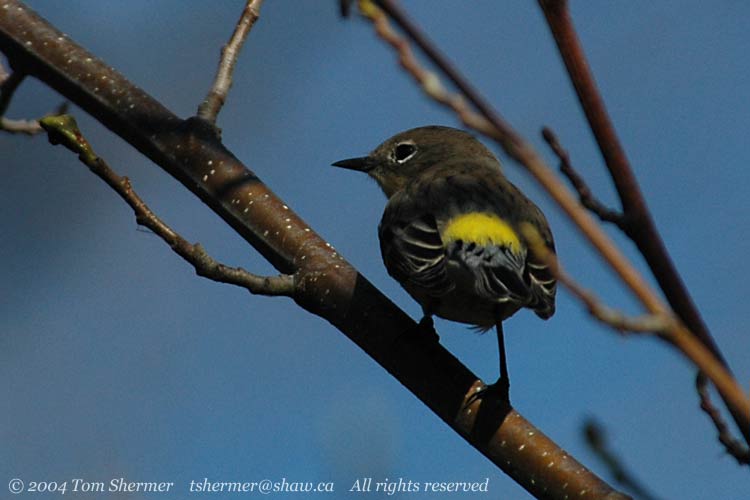 |
|
We stopped many times,
because we were checking every chickadee we saw to see if it was
a Mountain. And we saw a lot of chickadees--the Black-capped Chickadee
is one of the more common birds around here. The Mountain Chickadee
looks a bit like a Black-capped, except it has a white stripe
over top of the eye. We saw no stripes on our chickadees.
At one of our frequent
stops, though, we noticed some House Finches and a Golden-crowned
Sparrow. Here's the Golden-crowned.
|
|
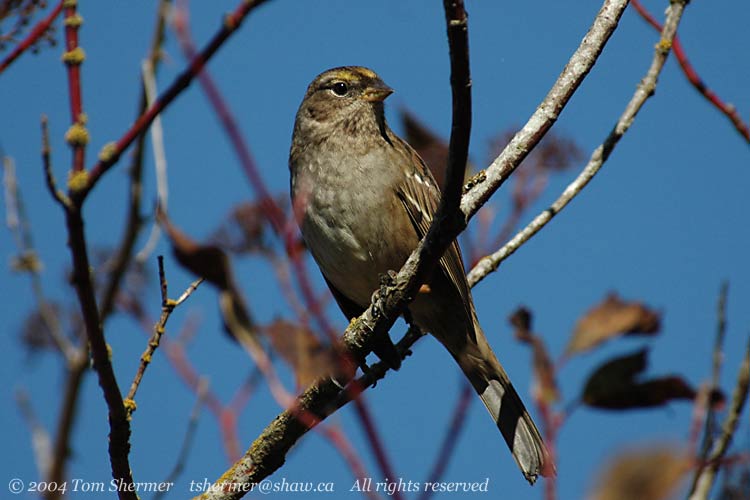 |
| This bird
was vocalizing, and I caught him in the act. You get a good view
of sparrow tongue in this photo. Don't say I never show you the
good stuff. |
|
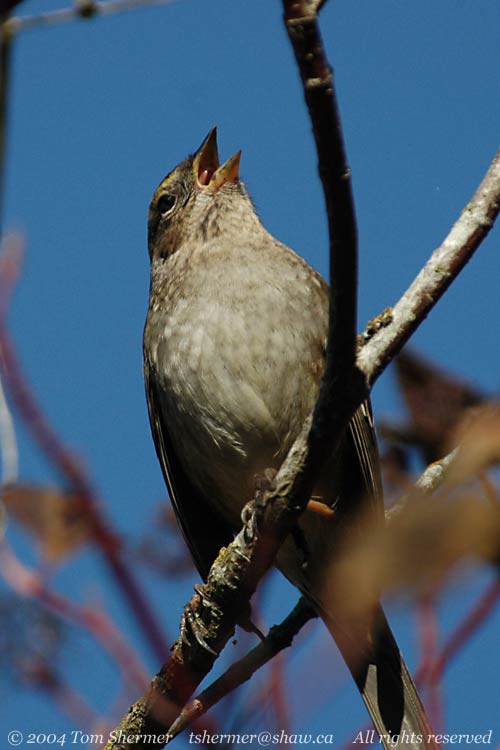 |
|
We headed out towards
the tower on the middle dyke, seeing lots of Black-cappeds and
Red-winged Blackbirds and sparrows. We searched around the tower
for a while, as the Mountains had been seen near there. Then we
decided to head out along the west dyke, which is the one closest
to the foreshore.
Just a little ways
up the dyke, the birders all react to a sound. My hearing is pretty
bad, so I didn't really notice anything, but the birders knew
that it was a chickadee, it didn't sound exactly like a Black-capped,
and it was headed straight at us. It was a Mountain Chickadee,
and it passed by us and lit upon a tree branch that we had just
passed.
The birders were busy
agreeing it was a Mountain as I plopped my tripod down, and started
working the head to point the camera at the chickadee. I got the
camera pointed in the right direction and tried to get it to focus.
I just wasn't fast enough, and the chickadee flew off before I
got a picture. Chickadees are like that; they don't usually stay
in one place for long.
We tried to relocate
the chickadee for a while, but came up empty-handed. Anyhow, my
companions were quite satisfied, as Mountain Chickadee isn't a
bird that one gets to see often in the area.
It was getting a little
late, so the group decided to head back out. Along the way back
to the entrance, they found a Ruby-crowned Kinglet, and tried
to point it out to me, but I didn't see it.
One thing that I was learning
is that birders like to move around more than photographers, even
though they're quite patient and will watch a bird a long time.
It became clear that if I want to take my time and carefully set
up my photos that I should probably be travelling alone.
On the other hand,
back at Fuller's Slough, the resident Black-crowned Night-heron
was out in the open. This generated enough interest that I was
able to set up my camera, put on the teleconverter, and take a
number of shots, all while my group was still rapt. Here's a couple
of photos of the Night-heron.
|
|
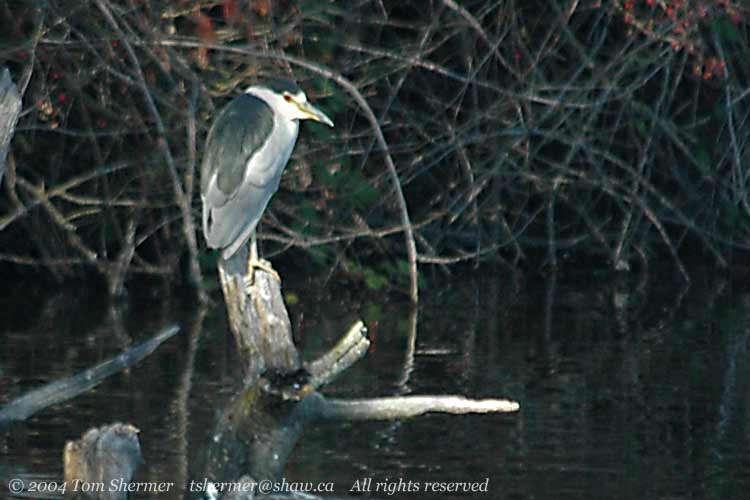 |
|
|
|
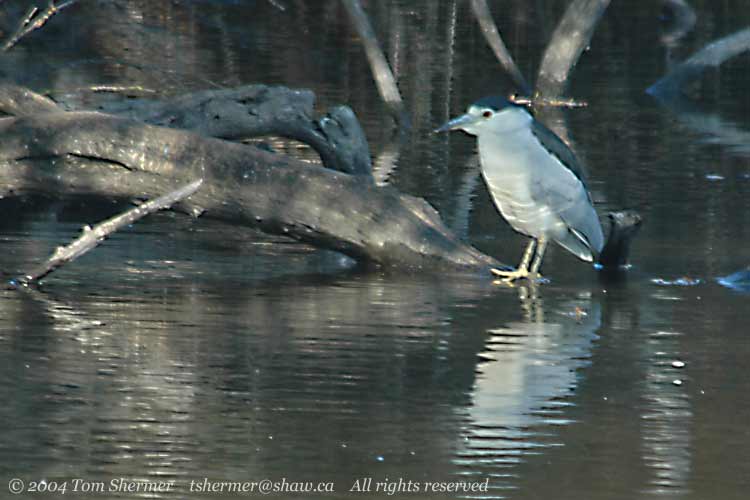 |
|
When we got back to
the gate, George entered our sightings into the log book, and
we said our goodbyes. I hung around the gate as they left because
I saw a rooster strutting about. This was a fine specimen, with
gorgeous, deep color on him. I took a bunch of portraits.
|
|
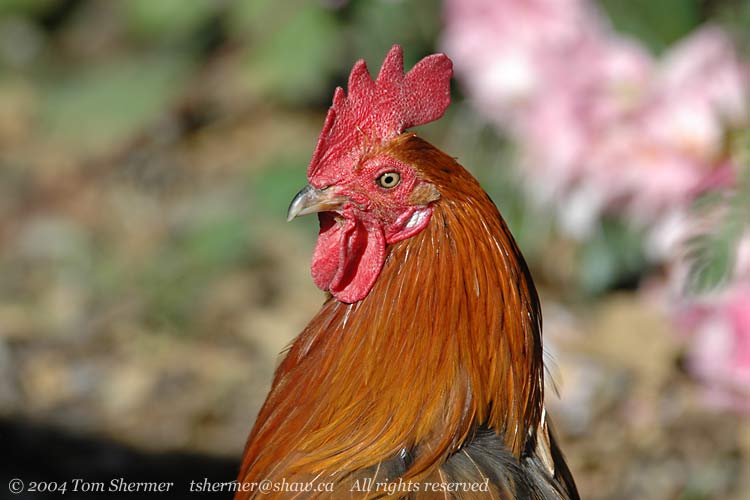 |
|
I've heard this guy
around the entrance to the refuge before, and caught a glimpse
of him once, but this was the first time I'd gotten him in the
open long enough to get photos...and not only was he in the open,
but he was in bright sunlight. I counted myself lucky.
|
|
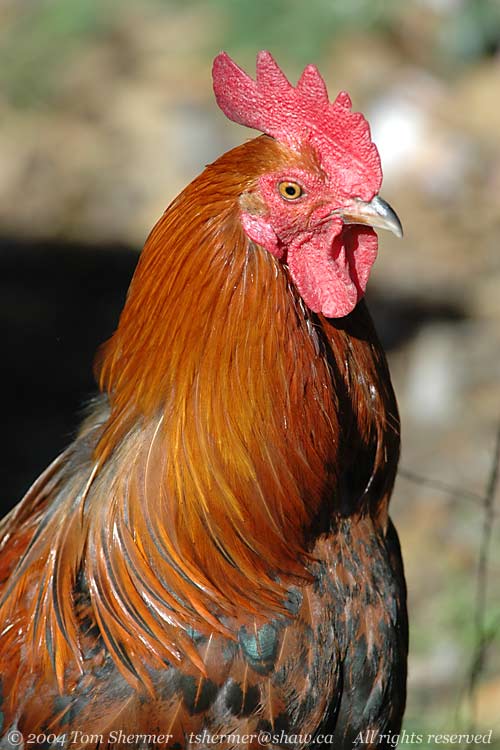 |
|
I really hadn't gotten
too many photos in during the day, but I had gotten some good
subjects, so I was happy. However, I did really want to get a
photo of the Mountain Chickadee, so as I drove home, I plotted
to return to Reifel soon.
Cock-a-doodle-doo,
Tom
|
|
|